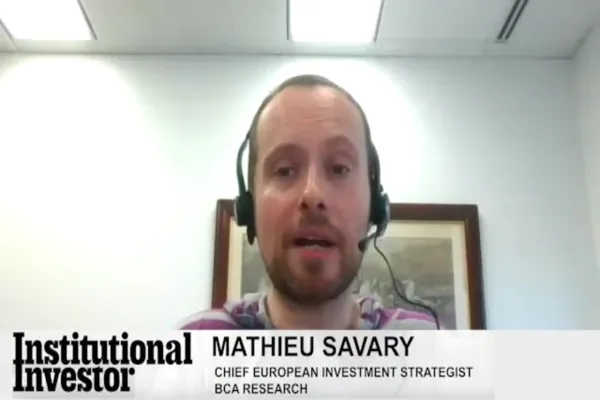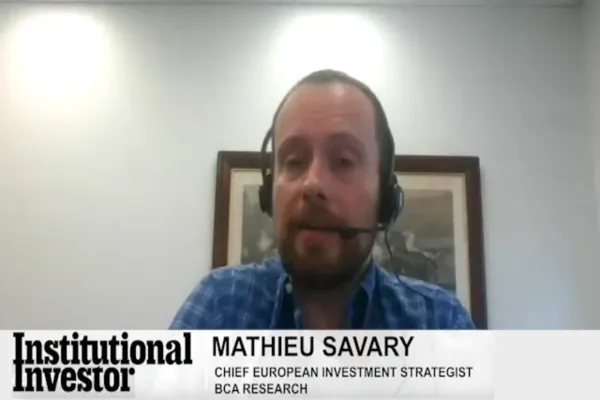European Central Bank President Mario Draghi addressed the European Parliament in Brussels today, assuring Union leaders that the bank stands ready to take more action if needed. According to the ECB chief, a “sustained normalization” of inflation remains distant as activity measures continue to stagnate. Meanwhile, in the U.S., six Federal Reserve policymakers will be speaking publicly today. So far all comments from ECB policymakers have raised dovish expectations for the December meeting, while in the U.S. the Federal Reserve is widely expected to begin tightening. As a result, many analysts now see the macro setup for the dollar versus the euro as a catalyst to retest levels reached in the spring.
Rolls-Royce dividend in peril. On Thursday, Rolls-Royce Holdings, the London-based manufacturer of aircraft engines and power systems, announced that it may decrease the dividend for shareholders as the company’s leaders guided full-year earnings-expectations lower. In the statement, the engine manufacturer said that next year’s profits could be more than $900 million lower than prior expectations.
Eurozone industrial data remains weak. September industrial-production data for the common currency zone released today by Eurostat were slightly better than consensus forecasts, with a decline of 0.3 percent versus August, or 1.7 percent year-over-year. With aggregate output growth for the third quarter at a meager 0.1 percent, the trend for manufacturing is supportive of an expansion of the ECB asset-purchase facility.
Pace of lending declines in China. Data released on Thursday by the People’s Bank of China (PBOC) revealed that pace of new loans slowed to the lowest level in over a year in October at 477 billion yuan. Despite six successive rate cuts by the PBOC in the past 12 months, demand for credit remains sluggish as fixed investments in property and industrial capacity continue to cool.
CBOE announced new loan market. This week CBOE Holdings, parent company of the Chicago Board Options Exchange, announced that it will partner in a new exchange venture with Chicago-based Environmental Financial Products. The American Financial Exchange (AFX) will debut in December with contracts tied to short term loans between regional and community banks. Pricing from this interbank loan market will support a new rate-benchmark series dubbed Ameribor.
Portfolio Perspective: Decent Earnings If You Don’t Count Energy
With investors sidetracked by last week’s headline reports, earnings season is quickly coming to a close for the quarter, with nearly 90 percent of the S&P 500 companies reporting so far. While the final tally for the quarter remains a few weeks away, more companies than expected have bested their projected earnings hurdle. According to a recent FactSet Insight report, companies in the aggregate are reporting earnings 5.1 percent ahead of expectations. Although the (earnings) growth metrics today remain in negative territory (-2.2 percent), we must continue reminding ourselves that earnings are still trending above the original quarterly estimates (-5.2 percent) and more importantly, earnings over the past year have been impacted by the downturn in the commodity-based industries. The energy sector alone, buffeted by the oil-price debacle, continuing strength in the dollar overseas and a continuing emerging-market growth malaise, has suffered through the largest year-over-year decline in earnings of all 10 sectors (-56.6 percent). If, in order to gauge the strength of the other sectors of the broader market, we excluded the energy industry, the blended (earnings) growth rate for the S&P 500 companies jumps from its current -2.2 percent to a +4.5 percent.
The declines related to the energy sector have correspondingly had a negative impact on corporate America’s projected revenue growth. To more than a few analysts, this trend points to a potential sales/revenue recession in the not-so-distant future. While the potential for a multi-period drop in revenues exist, the current revenue picture is once again negative, courtesy of the transitory damage inflicted by the commodity market slow-down. Today’s negative 3.7 percent revenue growth would bounce to a positive 1.4 percent if you extracted the unique (energy) industry impact. Looking forward though, there will be other (more) transitory concerns for the market pundits to target, including the recent jobs report commented on above. As investors’ focus migrates beyond the initial rate hike, concerns will surely include the possibility of acceleration in the rate-hike path. The issue of an improving labor market (and the ensuing wage pressure) will also raise the question of sustainability of growth in corporate margins. The offset to this fear will need to include evidence of improving labor productivity, product pricing power, an upturn in (global) sales growth and of course, favorable commodity pricing (cheaper).
Tom Stringfellow is the president and chief investment officer of Frost Investment Advisors in San Antonio, Texas.






